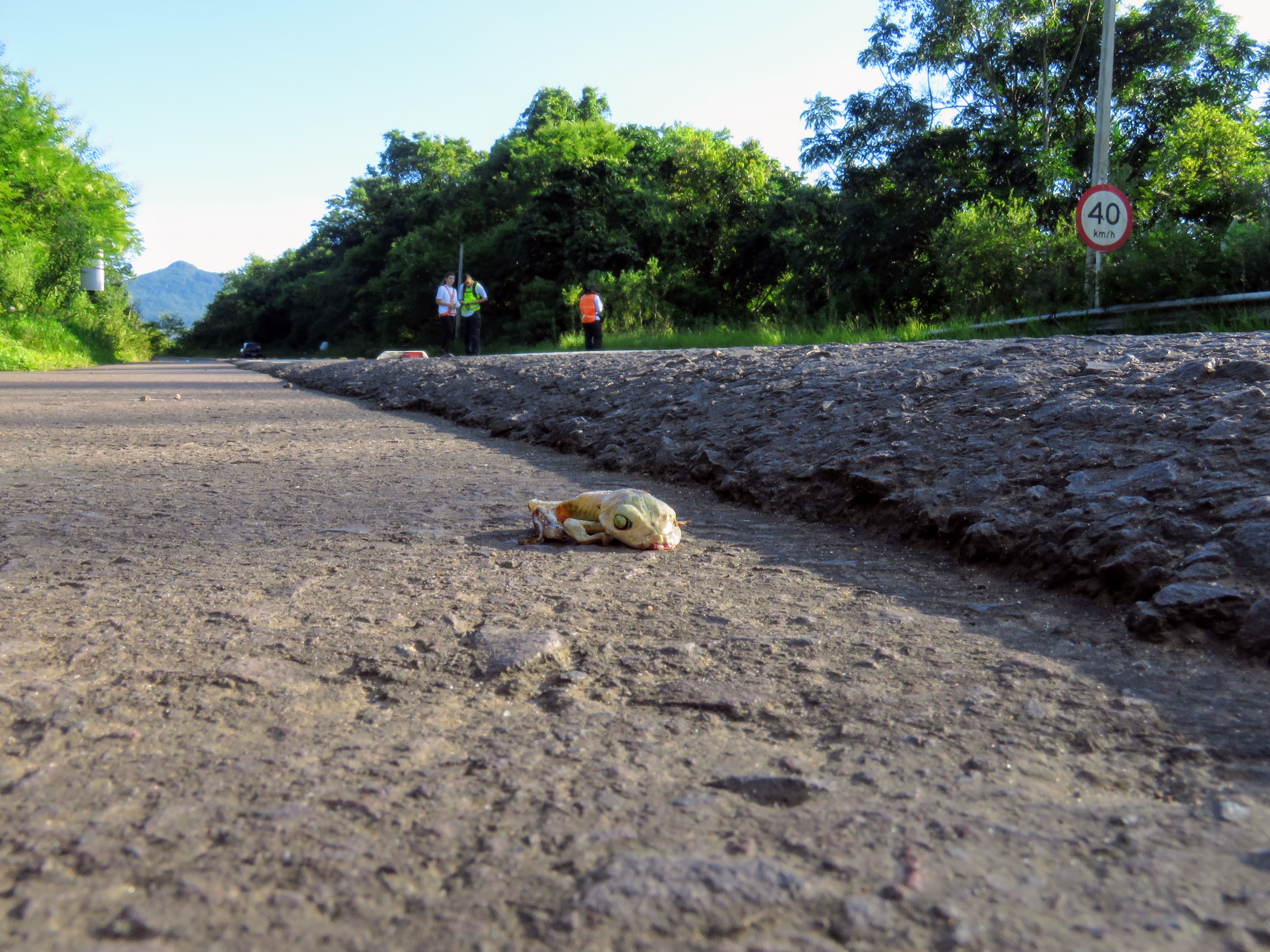In 2021, we received approximately 50 applications from the ASA Start-up Conservation Grants call, of which we will be able to fund six. Below you can learn more about the project Amphibian protection from roadkill in Brazil to be executed by the Road and Railway Ecology Group – NERF (Andreas Kindel; Caroline Zank, [email protected]; Fernanda Zimmermann Teixeira; Júlia Beduschi; Larissa Oliveira Gonçalves and Talita Menger Ribeiro).
Over the last decade the Road and Railway Ecology Group (NERF) at the Federal University of Rio Grande do Sul, Brazil has been accumulating experience in:
1) testing and developing sampling and analytical approaches for amphibian roadkill sampling with recent developments that include the use of hierarchical modeling to account for imperfect detection in fatalities estimation;
2) testing and implementing the first program specifically designed for amphibian roadkill mitigation in Brazil (and apparently in Latin America), combining fences specifically arranged to block tree frogs access to roads and drive them to underpasses. These measures have been installed over a 1 km road stretch that crosses de Biological Reserve Mata Paludosa in Rio Grande do Sul, directly benefiting 24 amphibian species, including four regionally threatened;
3) running workshops on guidelines for the evaluation of animal fatalities on roads with the participation of the most relevant stakeholders (e.g. Kindel et al. 2017);
4) supporting the elaboration of technical norms (e.g. Diretriz 06/18 by FEPAM) that formally demands amphibian road kill surveying and mitigation planning across Rio Grande do Sul’s road network.
In this project funded by the Amphibian Survival Alliance, we aim to promote the replication and improvement of these guidelines and the publishing of similar norms by all the 27 Brazilian state environmental institution as well as the federal agency (IBAMA). By doing so, we expect to benefit, in the long term, dozens of species that are road-killed, initially targeting roads that cross or border protected areas. Our experience with both studied areas convinced us that this is a highly unseen, chronic, and important impact for threatened (and still not threatened) amphibian species. Thousands of individuals are killed year after year in our protected areas – and this can and need to be urgently avoided.
As a result of the work we are starting now, we expect that within 5 years at least half of the Brazilian states will have specific norms to obligate the estimation and mitigation of amphibian fatalities on roads that cross or border protected areas and other priority habitats. To achieve our long-term goal, within this project we will organize and facilitate workshops involving staff of all Brazilian state environmental agencies to discuss guidelines and norms to evaluate, mitigate, and monitor amphibian fatalities in the context of the licensing process of roads. Initially, we will rank the Brazilian states into three categories of priority. This ranking will be based on the density of paved and unpaved roads crossing or bordering protected areas and amphibian richness (especially those globally or regionally threatened or data deficient). All Brazilian state environmental agencies will be invited for the workshops, but a greater effort will be directed to the states with the highest priority level. Workshops will take place over four one-day online meetings, each one with a specific agenda and expected outcomes. As project impact indicators, over the next years we will record the number of states with implemented guidelines, the number of protected areas with fatality mitigation programs and the number of road segments outside protected areas with mitigation programs.


